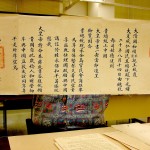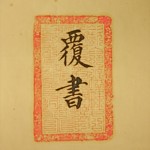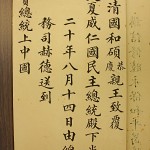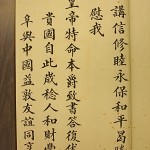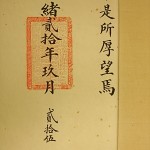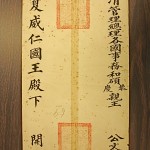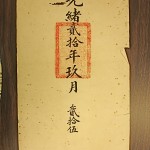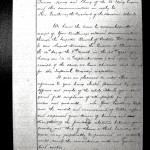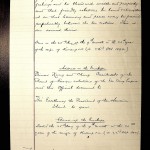See also: International Recognition of the Republic of Hawaii
This is the original letter sent by Princes Kung (now spelled Gong) and Ching (now spelled Qing) on behalf of Kuangsu (now spelled Guangxu), the Emperor of China, sent on October 22, 1894 to President Sanford B. Dole, recognizing the Republic of Hawaii. Interestingly, the name on the envelope refers to Dole as Prince of the Kingdom, although the letter itself refers to Dole as President.
The Chinese-style date (reign date) appearing in the Mandarin language and its English translation is the 14th day of the 8th month of the 20th year of the reign of Emperor Kuangsu. The English-language translator at that time wrote that that date was September 12, 1894. Thus the letter from Hawaii requesting recognition was received in China on September 12 and was answered on October 22. During that period China was engaged in the first Sino-Japanese war, which Japan won, forcing China to give Korea to Japan and also to pay a large indemnity. Despite being embroiled in a disastrous war, the government of China apparently considered Hawaii sufficiently important that it made time to send a letter to Sanford B. Dole granting diplomatic recognition to the Republic of Hawaii (although it took six weeks to do so).The letter of recognition is a single five-panel accordion-folded document written in Mandarin. Chinese language reads from right to left as we look at the document; therefore the order of the individual panels begins with #1 at our right as we look at it (the left hand of the person holding it from behind). Each column is read from top to bottom. The red box seen in several places is known as a “chop” and its function in China was similar to a wax seal or notary seal, confirming that the document is written under the authority of and speaking on behalf of the person whose name appears inside the box. The chops were simply stamped on top of the previously-written document. Thus the large bold black characters inside the red boxes are not signatures; they are merely whatever was already there when the chop was overlaid. The names certified by chops are given by the small, faint red characters inside the red borders of the chops — they are small and very hard to see in these photographs, and may be written in an archaic form of Mandarin. The folded letter was enclosed in an envelope of slightly larger size. When the letter was received the envelope was sliced open around the edges, resulting in two separate pieces being the front and back of the envelope (and still showing the traces of the flaps, or perhaps of some bands which wrapped it). There is also a two-page English translation dated October 22, 1894 and therefore we know the translation was done and approved in China.
Emperor Kuangsu was born August 14, 1871, and died November 14, 1908. His reign began on February 25, 1875 when he was only three years old (around the same time as Kalakaua became King), and ended with his death. Because Kuangsu was so young when his reign began, the dowager Empress Tzu Hsi (now spelled Cixi) made most of the decisions in his name and her influence remained strong even as he grew older — a similar situation to, but much more strictly controlling than, the situation in the Hawaiian Kingdom when dowager Queen Kaahumanu exercised great influence over Liholiho Kamehameha II and especially the early years of the boy-King Kauikeaouli Kamehameha III.
Thanks to some people at the Center for Chinese Studies at the University of Hawaii (Manoa) who provided historical, cultural, and linguistic assistance regarding the contents of this essay. They humbly requested to remain anonymous, for reasons which will remain unspoken.
Click on the photos to zoom in for more detail.
Entire 5-panel letter unfolded:
The five panels of the letter:
Front of envelope:
Back of envelope:
English translation page 1:
English translation page 2:
